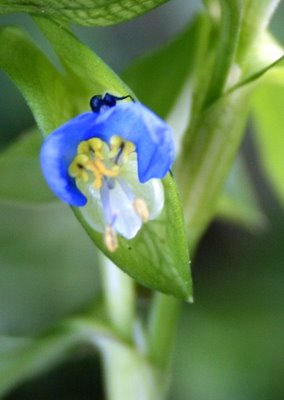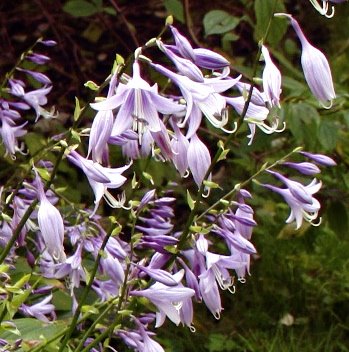
Asiatic dayflower (Commelina communis) has a sweetly demure true-blue blossom and a frighteningly aggressive habit. It had blanketed a portion of the back property line, insinuated itself into a phlox growing next to the house, slipped around behind the hollies, and generally eased into any available patch of bare ground.
When a few plants popped up at the end of last summer, I recognized them as members of the spiderwort family but figured that just as with their purple wildflower cousin (Tradescantia virginiana), peaceful co-existence was possible. What I didn't know, however, was that asiatic dayflower's promiscuous propagation--by seeds, roots, or just a length of broken stem setting in the ground where it fell--meant that it was not good at keeping to itself. Should it be a surprise that asiatic dayflower is used to extract heavy metals from contaminated soils?
So next year, I will have to be scrupulous about eradicating this intruder.







